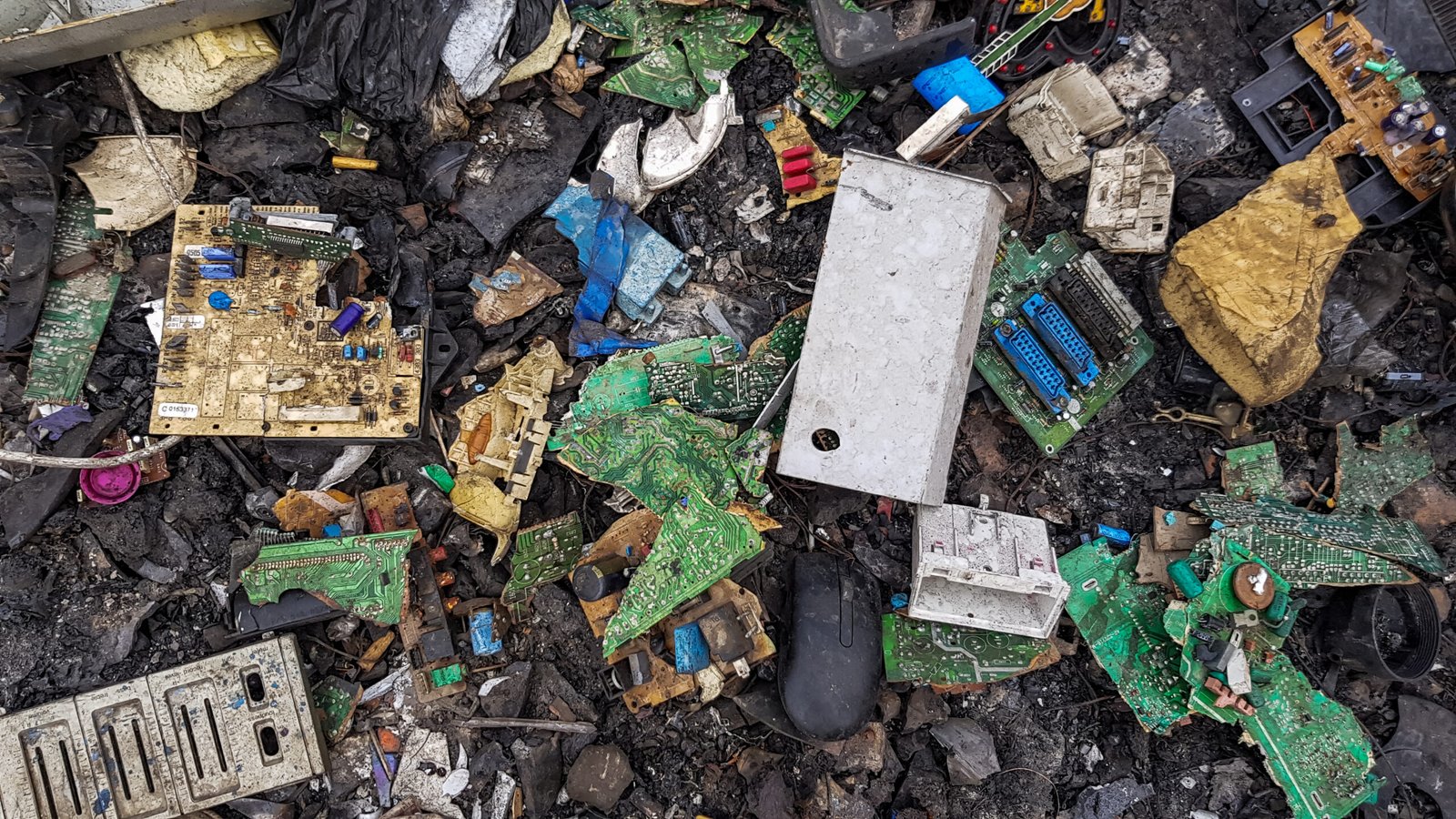Why in the News?
India’s rapid digitalisation, from smartphones to smart homes, has boosted convenience but generated 2.2 million tonnes of e-waste in 2025, making it the third-largest global producer (after China and the USA). At current rates, this volume may double by 2030, posing serious environmental and public health challenges.
What is E-Waste?
E-waste refers to discarded electrical and electronic devices such as smartphones, computers, TVs, and appliances, which can release toxic substances if not properly managed.
Why is E-Waste a Concern in India?
- Rapid growth: India’s e-waste rose from 71 MT in 2017–18 to 2.2 MT in 2025.
- Urban hotspots: 65 cities contribute over 60% of total e-waste; key areas include Seelampur (Delhi), Mustafabad (Delhi), Moradabad (UP), and Bhiwandi (Maharashtra).
- Informal recycling dominance: More than 50% of e-waste is processed informally, exposing workers and communities to hazards.
How is E-Waste Processed Informally?
- Manual dismantling (by kabadiwalas, scrap dealers, and slum-based workshops) without protective equipment.
- Open-air burning of wires and circuit boards.
- Acid leaching and dumping of components without gloves, masks, or protective clothing.
- Toxins released: Heavy metals (lead, mercury, cadmium, chromium), POPs (persistent organic pollutants), and 5/PM10.
- 5 levels in hotspots often exceed 300 µg/m³, over 12 times the WHO safe limit.
What are the Health Impacts of E-Waste?
- Respiratory illnesses: Chronic bronchitis, asthma, wheezing, breathlessness.
- Neurological and developmental damage: Lead, mercury, and cadmium affect children’s IQ, attention, and behavior.
- Skin and ocular disorders: Chemical burns, dermatitis, eye irritation from acids and heavy metals.
- Genetic and systemic effects: DNA damage, oxidative stress, immune alterations.
- Syndemic risks: Poverty, malnutrition, and unsafe housing worsen health outcomes.
- Studies and Data:
- In Benin, West Africa, exposed workers had higher respiratory ailments than non-exposed control groups, and in India, around 80% of informal e-waste workers report similar health issues.
- Studies from China and WHO data show that millions of children exposed to hazardous lead from informal e-waste face all the above impacts.
- WHO reports 18 million children and 13 million women live or work near informal e-waste zones. In India, children often dismantle electronics, facing serious health risks.
What are the Environmental Implications?
- Air pollution:5/PM10 from burning electronics.
- Soil and water contamination: Heavy metals and POPs accumulate in the ecosystem.
- Bioaccumulation: Toxins enter the food chain, affecting humans and animals.
What Policies Exist to Manage E-Waste in India?
- E-Waste (Management) Rules, 2022:
- Strengthened Extended Producer Responsibility (EPR).
- Mandatory registration for recyclers and dismantlers.
- Incentives for formalisation and scientific handling.
- Implementation gaps:
- Only 43% of e-waste is formally processed (2023-24 data).
- Legal disputes over EPR credit pricing hinder enforcement.
- EPR credit pricing is the price producers pay to recyclers to meet their responsibility of safely collecting and recycling e-waste. Low or capped prices can discourage proper recycling and affect compliance.
Challenges and Way Forward
| Challenges | Way Forward |
| Majority of e-waste processed informally | Formalise the informal sector through skill certification, PPE provision, and regulated infrastructure. Also include access to healthcare and social security. |
| Weak implementation of E-Waste Rules | Strengthen enforcement via pollution control boards, environmental audits, and digital e-waste tracking to ensure compliance |
| Limited public awareness | Launch mass awareness campaigns and include e-waste education in schools to build public responsibility from an early age. |
| High health risks for workers | Expand medical surveillance, health camps, and long-term studies, especially for children in e-waste hotspots. |
| Inefficient recycling technologies | Promote R&D for affordable local recycling methods and decentralised treatment hubs to improve efficiency. |
Conclusion
India faces a toxic crossroads where digital growth must not compromise public health or environmental safety. Rising e-waste demands urgent systemic reforms, guided by science, justice, and a vision where technology protects human dignity and health.
Ensure IAS Mains QuestionQ. Critically analyse the health and environmental challenges posed by India’s growing e-waste. Suggest strategies for integrating informal recycling into a safe and sustainable framework. (250 words) |
Ensure IAS Prelims QuestionQ. Consider the following statements regarding e-waste in India: 1. India is the third-largest e-waste generator globally, producing 2.2 million tonnes in 2025. 2. Over 50% of e-waste is formally recycled under the E-Waste (Management) Rules, 2022. 3. Lead, mercury, and cadmium are major toxins released during informal recycling. Which of the above statements are correct? a) 1 and 3 only b) 2 and 3 only c) 1 and 2 only d) 1, 2 and 3 Answer: a) 1 and 3 only Explanation: Statement 1 is correct: India generated 2.2 million tonnes of e-waste in 2025, making it the third-largest generator globally, after China and the USA Statement 2 is incorrect: Less than half (~43%) of India’s e-waste is formally recycled under the E-Waste (Management) Rules, 2022; the majority is processed informally Statement 3 is correct: Informal e-waste recycling releases toxic substances including lead, mercury, and cadmium, which pose serious health and environmental risks. |





